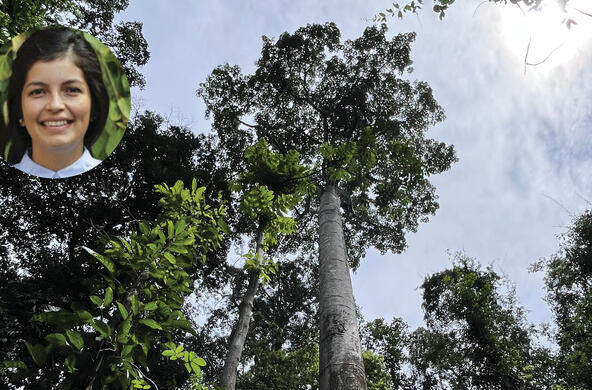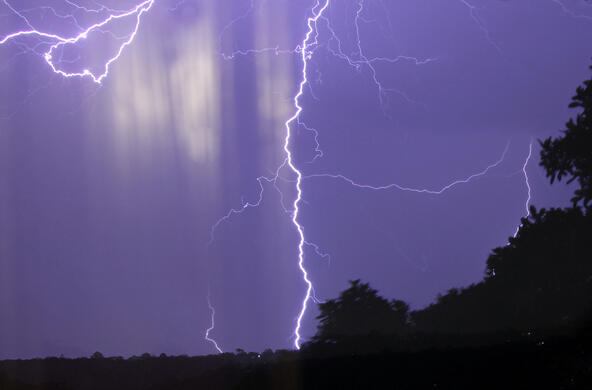Tropical forests are our climate allies. By storing carbon dioxide in their trees and soils, tropical forests trap harmful greenhouse gases that contribute to climate change.
Sarah Batterman, an ecologist at Cary Institute, studies tropical forests in Central and South America. She is working to understand the role of different tree species in tropical forests, how soil nutrients affect tree growth and carbon storage, and how we can restore healthy tropical forests while promoting biodiversity.
Tropical forests hold 70% of the carbon stored in forests globally. They are also highly threatened due to deforestation, agriculture, development, mining, and logging. These activities turn a critical carbon sink into a carbon source.
Batterman explains, “As trees grow, they take up carbon dioxide and store it in their wood. This traps carbon emissions that would otherwise fuel climate change. But when forests are converted to farms and pastures, and trees are burned or chipped, stored carbon is released back into the atmosphere. Globally, due to fossil fuel emissions and deforestation, we are releasing far more carbon than forests can absorb.”
A focal area of Batterman’s research is investigating the role of nitrogen-fixing trees in tropical forests, and how they could help increase the tropical carbon sink in regrowing forests, including areas undergoing active reforestation.
“Nitrogen fixers have special abilities that allow them to access nutrients that promote plant growth throughout the forest community,” Batterman says. “This important service will be even more critical in the future; tropical forests are expected to become increasingly nutrient-starved as rising atmospheric carbon dioxide levels stimulate tree growth which will require more nutrients than the soils can provide.”
Just as people need a mix of nutrients – fats, protein, fiber – to stay healthy, plants also need a variety of nutrients to thrive. Nitrogen and phosphorus are among the most important.
Nitrogen-fixing trees have nodules on their roots that house bacteria. The trees feed the bacteria carbon, and in exchange, the bacteria convert nitrogen in the atmosphere into a form that the tree can use for food. This process, called nitrogen fixation, allows nitrogen-fixing trees to self-fertilize, speeding growth while increasing carbon storage.
New research shows that nitrogen fixers are also able to ‘unlock’ phosphorus – an essential plant nutrient that is scarce in tropical soils – by altering soil chemistry around their roots. Fixers make the soil more acidic, which speeds weathering and releases vital nutrients. By increasing nutrient availability, fixers fertilize the soil, enhance plant growth and carbon storage, and support a diversity of species.
Batterman emphasizes, “Promoting biodiversity is an important goal in reforestation efforts. When a deforested area is replanted with one crop, like a palm plantation, these monocultures do not provide the diversity of habitat needed to support a variety of plants and wildlife. Letting forests regrow naturally is the best way to support biodiversity and ensure future resilience. Active reforestation efforts should take care to plant a mix of tree species, including nitrogen fixers.”
“Restoring tropical forests is a critical step to mitigate climate change impacts,” Batterman concludes. “By protecting existing forests, allowing degraded forests to grow back, avoiding monocultures, and supporting active reforestation strategies – we can protect the global carbon sink.”






